I am so pleased to share an interview today with Hine Mizushima, one of my all-time favorite craft artists!
I had the pleasure of meeting her last year when she was in NYC for a needle-felting art show—she was super sweet and answered all of my eager questions as she was installing her pieces. Since then I’ve wanted to get a more in-depth interview with her that didn’t involve me interrupting her work at the same time.
Hine is a Vancouver-based artist and animator with a background in fine arts, which she studied in her home country of Japan. You may have seen her beautiful needle-felted pieces all over craft blogs and Etsy, and her work also appears in many gallery shows, including the upcoming Supahcute Dream Team Show “Art Too Cute For Words,” opening May 12 at Leanna Lin’s Wonderland in LA.
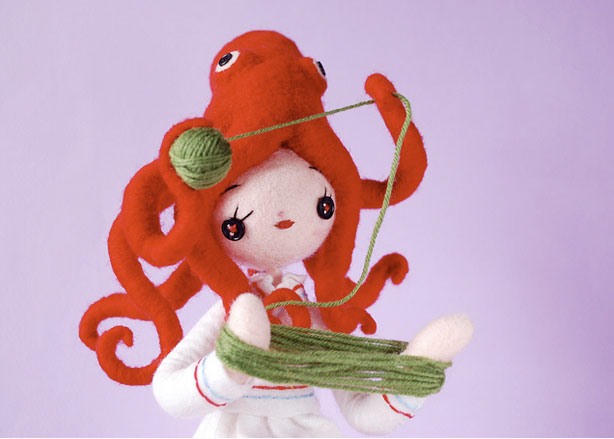
Detail from one of Hine’s pieces in “Art Too Cute For Words”
Hine’s work has even starred in music videos for They Might Be Giants—videos that Hine herself also directed and animated! So you can see why I am eager to pick the brain of this superstar in the craft art world.
What I didn’t know before this interview is how much Hine’s current work came about through experimentation and chance—to me, her story is an inspiring reminder to be open to new materials and techniques (and technology) and also to be bold in sharing your work with the world!
OK, onto the interview! Read the full thing after the jump.
Anna: In your bio, you describe yourself as a “slow crafter.” What does that mean to you?
Hine: The words “slow crafter” might sound like some kind of urban organic lover, in the same way as “slow life” or “slow food,” but actually it just means I’m slow as a turtle when I make stuff.
Anna: What initially made you start using needlefelting as a medium? Was it an instant love?
Hine: When I started to work on the second stop-motion music video (The Secret Life of 6) for a They Might Be Giants kids DVD in 2007, the wife of one of the band members made some great needlefelted number-shaped puppets for the video. So I wanted/needed to make other characters and props with the same materials to go with them. That was the beginning. It was actually a lot of fun and easy to create 3D stuff with felting wool. If I hadn’t got the video job, I probably wouldn’t have started needlefelting.
Anna: I had no idea that you began needle-felting after you started working with TMBG. Can you tell me a bit more about your background in animation? And how did you first get connected with the band?
Hine: Unfortunately I’ve never studied animation, photography, video shooting/editing, etc… I even didn’t know how to make stop-motion animation before I worked with TMBG. About 5 years ago, I was looking for information about some simple gifs on the Internet, but instead of finding it, I stumbled upon ‘How to make stop-motion video with your digital camera and iMovie.’ It looked interesting and easy, so I made a parody video with tiny puppets for TMBG music, just for fun. Then I tried to post it on their My Space page, but I didn’t understand how it works. Then I found ‘send message’ button instead, so I simply sent them the link to my video. Then a few days later, they contacted me, asking me to work on a video project with them. I REALLY freaked out, of course! If I haven’t stumbled upon the How-to site, I even wouldn’t have started working with TMBG. The life is interesting and unpredictable… isn’t it?
Anna: What was it like to work with them? And how long did it take you to make the video?
Hine: Thanks! I have been a big fan of their music long time, so when I work with them (always with John F, who is the art/design guy), at first I had to pretend I wasn’t a fan girl :D They are a client to me, but they are great artists as well, so they really understand what creative work is and, after we brain storm ideas, they let the artists take care of visual things. We work only through email. John has always lots of very interesting and inventive ideas.
It takes quite long time to make a music video, because I work alone. I have to make the storyboard, the puppets, props and backgrounds, as well as doing the shooting, animating and editing by myself (don’t forget the “slow crafter” part). It used be take about a month (7 days a week!) for me to make a minute of video, but nowadays it takes even more time because I’m getting more obsessive.
I recently made a felt piece for a new They Might Be Giants project, which will be released soon (I hope…).
Anna: One minute of animation in a month is incredible dedication! Can you tell me about your setup for animation? Do you have a studio where you can leave everything in its place and come back to the same scene the next day? Do you also do all the editing of the videos yourself, or does someone else edit and add the sound etc?
Hine: If you see my studio, you might be surprised, because it’s a tiny ordinary room! I usually make the sets on my IKEA drawer or desk (yes, it’s hard to use my iMac during shooting). Sometimes my cat destroys the set or steals a character, if I forget to close the door :D In my case I don’t need to keep the same sets for long time, because each scene is short. I do all the editing too (but at a very low level…). I always get the sound first, and then start to work along with it.
Anna: I recently started noticing your animated GIFs. Do you see GIFs as a shorter form of your stop-motion animations, or do you think of them as a completely different art form?
Hine: The gifs are very simple versions of stop-motion animations for me. I can make them quickly and see the result quickly, and the minimized movement and the loops are very interesting. I actually didn’t know a lot about making gifs before. Last year I discovered an iPhone app (Gif Shop) for making gifs, which was very easy. So as soon as I got my own iPhone, I immediately download the app and started to make some gif animations. It’s really fun!
Anna: I also wanted to ask you about the way you incorporate Japanese themes and motifs in your work. Is this something you’ve always done, or did you start referencing Japan in your art after you started living abroad? Is there something in particular that you aim to convey about Japan and Japanese culture in your art?
Hine: Interesting question! I’m usually barely conscious of that, except If there is particular Japanese theme in the exhibition. I always loved Japanese 60’s & 70’s retro stuff, even when I was in Japan, but after I left Japan, I became more and more interested in Japanese traditional culture and retro stuff. I just make what I really want at the moment, so basically I guess there is no particular meaning that I am trying to convey about Japan and Japanese culture in my art.
Anna: You participate in many art shows and you also sell some of your pieces on Etsy. What’s your favorite part about your creative work? Do you enjoy the business aspect of it too?
Hine: I’m not good at the business aspect… but I always enjoy making something. My favorite part might be photographing my finished art work and then adjusting the colours, etc.
Anna: I’ve noticed that you incorporate a lot of miniatures into your art pieces. Where do you get them? (I assume you make many of them too?)
Hine: I often use the Japanese “Shoku-gan” (miniature plastic toys that come in candies like the prize in Cracker Jack). I order them online or my friends sent to me from Japan. These are really good quality, but I cannot find many. I sometimes buy miniatures from Etsy too, and once from eBay. And I sometimes make them by felt if I need to. I would like to visit doll house shops but have never found one. I actually want to know where people get the fantastic miniature props and furniture which I sometimes see on Flickr.
Anna: What do you do when you want to get inspiration for a new project?
Hine: I always have a thick spiral sketchbook on my desk, and I write down or draw any interesting ideas that pop into my head in it with pencil. When I start to make a new piece, I check the sketchbook first. There will be a bunch of ideas which I even don’t remember there :D I also like to see my Favourites on Flickr and Etsy. It reminds me of what I really love, and makes me feel happy and motivated. And sometimes miniature stuff inspires me. I usually don’t decide on the details before I start needlefelting. Some very interesting ideas and details always come out while I am working, especially at the very end of the process. So the first idea often gets turned into a different idea by the end.
Thank you so very much, Hine, for sharing your fascinating world with us!
Be sure to check out Hine’s Etsy shop for lots of awesome stuff (including products with her beautiful illustrations), and if you’re in the LA area, be sure to check out Hine’s work in her upcoming group show. Here are all the details:
Supahcute Dream Team Show
“Art Too Cute for Words”
May 12 – June 24, 2012
@Leanna Lin’s Wonderland in LA

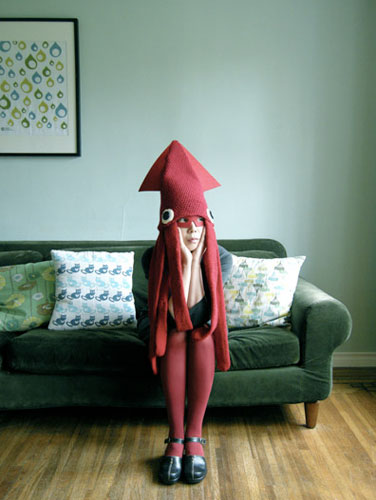
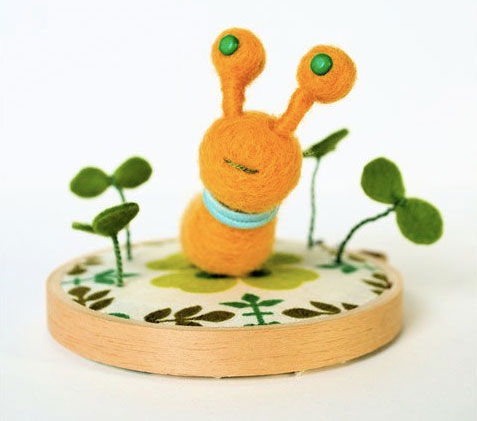
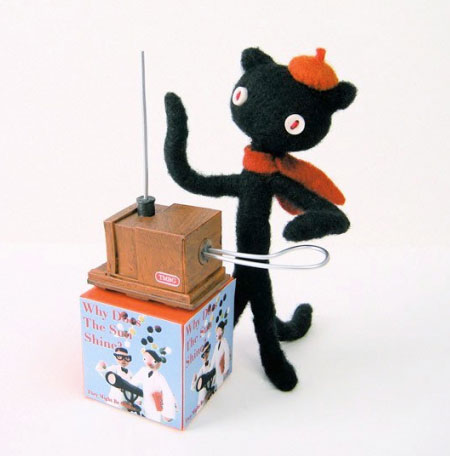
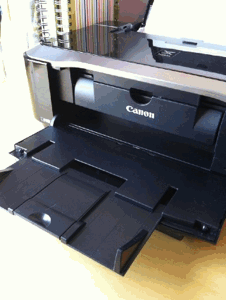
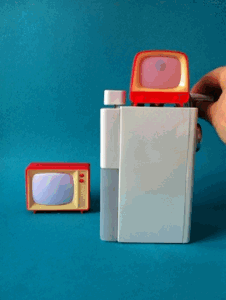
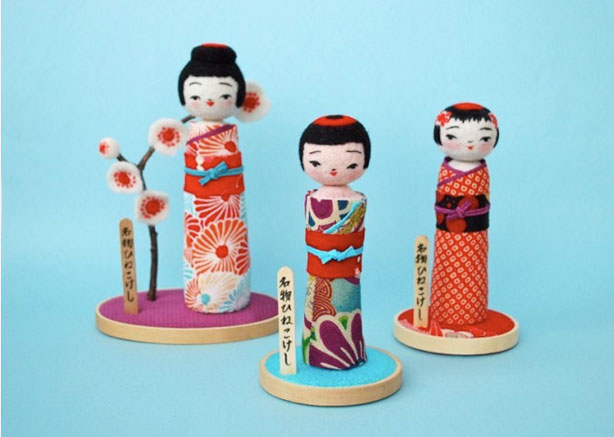
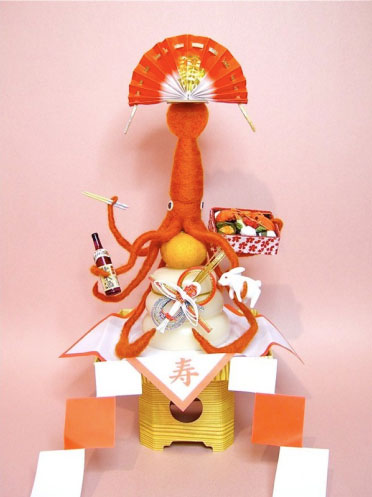
thank you for this wonderful Interview, Hine has always been a very inspirational artist to me and I’m facinated with her work and working process.
Wonderful interview with one of my favorite artists! Thanks for plugging the show. :)
Pictures are adorable and the interview is interesting too. I look forward to watching the video clip and often circulate clips like this as they’re light hearted and fun.
Oh Anna you are sooooo lucky! To interview such cool people.
Oh I love this! A really fun interview, and those gifs are hilariously awesome. I think the 3-D printer is my favorite, for sure. Also, the top picture of the squid girl makes me giggle every time. She just looks so casual and blase! And in a squid costume, no less…
i want to try needle felting now! what supplies do you need to do it?
Venessa – I’m not much of a needle felter myself, but a great place to start is with the book and kits from Moxie. Here’s the link to her Etsy shop:
http://www.etsy.com/shop/madebymoxie
I like the octopus hat!
I completely forgot about the squid costume. It was like a duh and an Ah-ha! moment all at the same time when I realized who Hine-san actually was. I want to make a squid costume, but my crafting time is already blocked off for months.